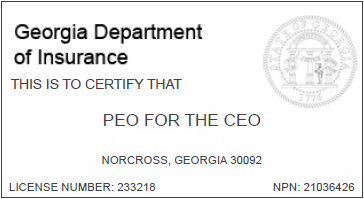1.4 HRA vs. HSA: Smarter Cost Containment Strategies for Employers
As Q4 group medical insurance renewal season approaches—when 85% of businesses face decisions about health coverage—employers are looking for strategies to manage rising premiums while also supporting employees’ out-of-pocket costs. Two popular options are Health Savings Accounts (HSAs) and Health Reimbursement Arrangements (HRAs).
Both provide
tax advantages and improve affordability for employees, but they function very differently, and one often offers
greater control and cost predictability for employers.
🧩 What Is an HSA?
A
Health Savings Account (HSA) is an
employee-owned account that pairs with a
High-Deductible Health Plan (HDHP).
- Employer Match Option: Employers can contribute funds, similar to a 401(k) match.
- Employee Ownership: The account belongs to the employee—even if they leave the company.
- Tax Advantages: Contributions are pre-tax; growth is tax-free; withdrawals for medical expenses are tax-free.
Pros:
- Empowers employees with portable, long-term savings
- Triple tax advantage
- Strong recruiting and retention tool
Cons:
- Funds are permanently employee-owned
- Employees may use dollars for non-healthcare expenses after leaving
- Requires enrollment in a
qualifying HDHP
🧩 What Is an HRA?
A Health Reimbursement Arrangement (HRA) is an employer-funded account used to reimburse employees for eligible medical expenses.
- Employer Control: HRA dollars remain with the company if unused.
- Flexible Design: Employers determine what expenses are covered (deductibles, copays, prescriptions, etc.).
- Tax Advantages: Reimbursements are tax-free for employees and deductible for employers.
Pros:
- Employer retains control of funds
- Greater flexibility in plan design
- Can be paired with any health plan type, not just HDHPs
Cons:
- Employees don’t own the funds
- Requires
clear communication so employees understand how it works
⚖️ Which Strategy Supports Cost Containment Better?
- HSA Match: Great for employee engagement and long-term savings, but less predictable for employers since contributions are permanently given away.
- HRA: Provides greater cost containment, because:
- Unused funds roll back to the company
- Employers can cap and customize coverage
- HRAs
target high-impact expenses (e.g., deductible offsets) to reduce medical trend risk
Example: One client shifted from an HSA match to an HRA deductible offset model and saved over $50,000 annually while keeping employees’ out-of-pocket costs manageable.
🧠 Underwriting Note
Some carriers may require confidential health questionnaires for HRA-based strategies, similar to level-funded plans. While this adds a step, the premium savings and cost predictability often make it well worth the effort.
🏆 Bottom Line
- Use HSAs if your strategy prioritizes employee ownership and long-term savings.
- Use
HRAs
if your priority is
cost containment, plan flexibility, and control of funds.
Many employers are now pairing HRAs with HDHPs, PEO master plans, or level-funded arrangements to achieve the perfect balance of savings, protection, and employee satisfaction.
📩 Next Steps
Want to see if an HRA strategy could save your business money this renewal season?
Email:
suzanna@peofortheceo.com for a
free side-by-side comparison tailored to your company.
About Suzanna Martinez
Suzanna Martinez is the founder of PEO For The CEO, bringing
20+ years of experience working for multiple PEO companies.
She has guided hundreds of businesses in Georgia and Colorado
to streamlined HR operations and significant cost savings.
Suzanna specializes in negotiating large-group health insurance
rates and matching businesses with the right PEO partner.


